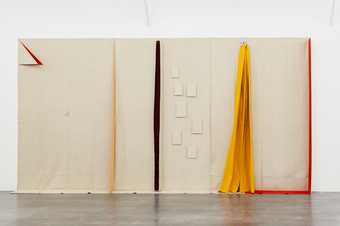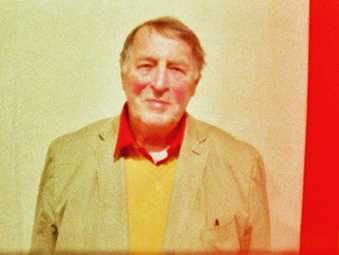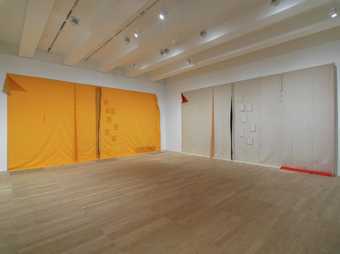Explore Stellwerk, where Franz Erhard Walther blurs the boundaries between the object and the viewer
Originally, visitors could physically interact with the artwork. Now, Walther invites the viewer to imagine folding, unfolding, opening, closing and standing next to Stellwerk.
Stellwerk is part of Walther’s Wall Formations series which he made between 1979 and 1985. In this series, he constructed large wallbased works from raw and coloured heavy cotton. The works were hand-sewn by Johanna E. Walther, the artist’s long-time collaborator and former wife. They often include flaps revealing windows of colour, places to stand on, and sometimes components to be worn.
Stellwerk is a German word that the artist says is untranslatable. The artwork is unique among the Wall Formations series as it is the only work that consists of two wall formations. The first is made from raw cotton and features a loop, flaps and protrusions of colour. The second is a copy of the first, but made from yellow cotton. The yellow part can be displayed folded and hung on the raw cotton wall formation. It can also be unfolded and hung as a separate piece.
Walther has been exploring action as art for six decades. Often creating fabric-based works, he sees a similarity between physical gestures and sculptural shapes. He states, ‘there is nothing theatrical about these gestures, and they do not represent anything but themselves’. For Walther, there is no distinction between physical interaction or imagined action. Instead, he sees the body, the mind, and the object as all part of the artwork.
É«¿Ø´«Ã½



